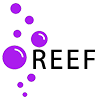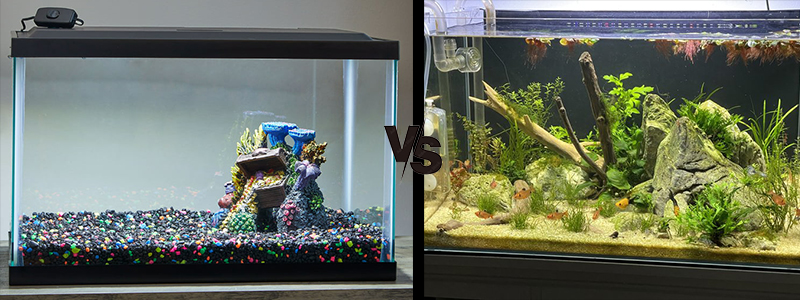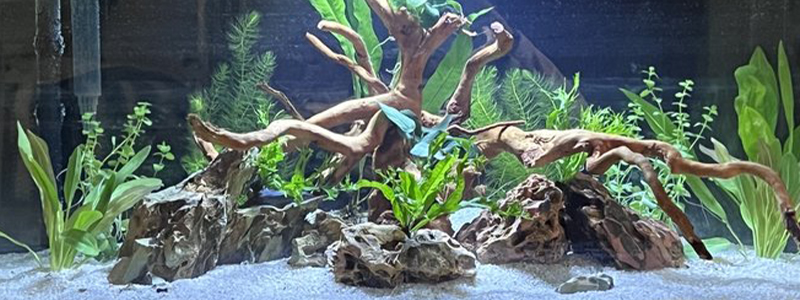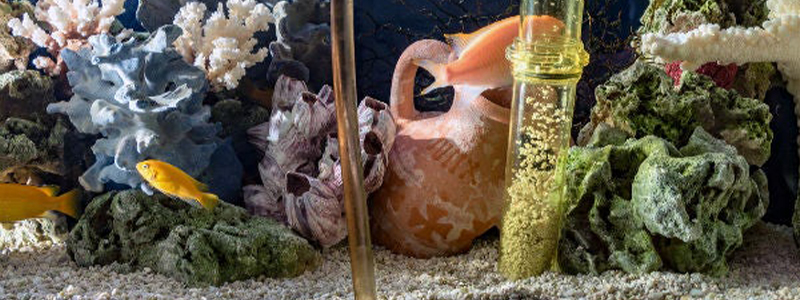Live rock is the foundation of a saltwater aquarium. It plays a vital role in keeping your water clean and your aquarium healthy. It provides protection and shelter for your fish and critters. And it gives coral, sponges, and many other things a surface to grow on.
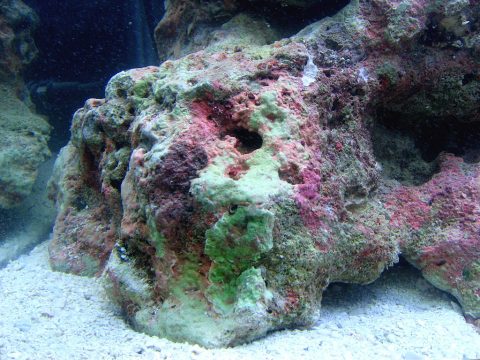
There are several types of live rock to choose from. Let’s take a look at the advantages and disadvantages of some of the more popular options.
Disclosure: This article contains affiliate links. When you follow a link to purchase the products, I sometime earn a commission, at no additional cost to you. Read my full disclosure here.
Pukani live rock:
Pros:
- Very light weight and very porous. Pukani rock provides a lot of surface area for both aerobic and anaerobic bacteria. This means it is very good at helping to remove ammonia, nitrites, and nitrates from the tank.
Cons:
- Most dry rocks that came from the ocean have high phosphates. However, many aquarists report Pukinai dry rock has more phosphate than any other type of live rock. High phospates can feed severe outbreaks of nuisance algae.
Tonga live rock:
Pros:
Cons:
- Like any dry rock that originally came from the ocean, it can have high levels of phosphate which may cause algae blooms as it leaches out of the rock into your tank water over the first 6-12 months of use.
Man-made live rock:
Pros:
- Eco-friendly. You know for certain it is not being harvested from living reefs.
- Low to no phosphates.
- Comes in different shapes such as branches and shelves.
Cons:
- Less porous than natural pukani or tonga rock.
- Can be much pricier than other types of rock.
Florida Reef Rock:
Florida reef live rock is limestone rock that is quarried inland from deposits made up of what used to be ancient ocean reefs.
Pros:
- Eco-friendly. You know for certain it is not being harvested from living reefs.
- Florida reef rock from respected sources such as ReefCleaners.org and Marco Rocks are reported to have lower phosphates than most any other type of live rock.
- Least expensive type of rock.
Cons:
- More dense, heavier, and often less porous than Pukani or Tonga rock. So you need to buy a bit more to get the same amount of surface area and biological filtration the other rocks provide.
- This means more cost and more weight in your aquarium.
- If it also lacks very fine pores there will be nowhere for anaerobic bacteria to grow. So, while it may help process ammonia and nitrate, it will not be very effective at reducing nitrates … so some other means of nitrate removal will be needed.
Each type of live rock can be purchased from numerous sources whether it be online or at your local fish store.
And they can be purchased in different ‘states’.
By this I mean you can get pieces that are literally dry chunks of rock (old coral skeletons to be exact) that will need to be cycled and cured.
You can get pieces that have already been cured, cycled, and shipped or bought wet. This means they are ready to use and have little or no other life on them other than the bacteria needed to consume the harmful ammonia, nitrites, and nitrates produced as waste by the fish and critters in your aquarium.
Or you can get pieces that are aqua-cultured and teaming with life. This means they not only have the need for bacteria to act as a biological filter for your aquarium. They will also be covered in anything from barnacles and sponges to coral and crabs.
Each of these ‘states’ of dry rock has advantages and disadvantages as well, but that’s a topic for another article.
(By Nat Tarbox [CC BY 2.0 (https://creativecommons.org/licenses/by/2.0)], via Wikimedia Commons)
